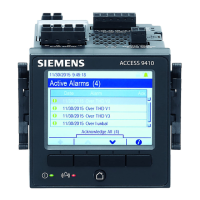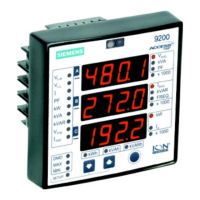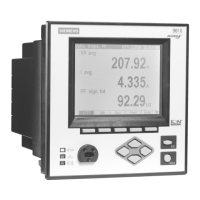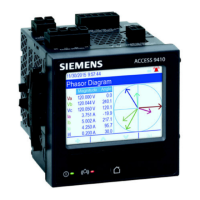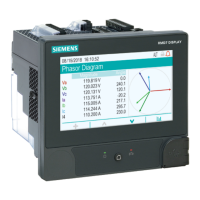9410 series Verifying accuracy
Verifying accuracy
Overview of meter accuracy
All meters are tested and verified at the factory in accordance with International
Electrotechnical Commission (IEC) and American National Standards Institute (ANSI)
standards.
Your digital power meter typically does not require re-calibration. However, in some
installations a final accuracy verification of the meters is required, especially if the
meters will be used for revenue or billing applications.
Accuracy test requirements
The most common method for testing meter accuracy is to apply test voltages and
currents from a stable power source and compare the meter’s readings with readings
from a reference device or energy standard.
Signal and power source
The meter maintains its accuracy during voltage and current signal source variations
but its energy pulsing output needs a stable test signal to help produce accurate test
pulses. The meter’s energy pulsing mechanism needs approximately 10 seconds to
stabilize after every source adjustment.
The meter must be connected to control power in order to conduct accuracy
verification testing. Refer to your meter’s installation documentation for power supply
specifications.
DANGER
HAZARD OF ELECTRIC SHOCK, EXPLOSION, OR ARC FLASH
Failure to follow these instructions will result in death or serious injury.
Verify the device’s power source meets the specifications for your device’s power
supply.
Control equipment
Control equipment is required for counting and timing the pulse outputs from an energy
pulsing LED or digital output.
• Most standard test benches have an arm equipped with optical sensors to detect
LED pulses (the photodiode circuitry converts detected light into a voltage signal).
• The reference device or energy standard typically has digital inputs that can
detect and count pulses coming from an external source (i.e., the meter’s digital
output).
NOTE: The optical sensors on the test bench can be disrupted by strong sources
of ambient light (such as camera flashes, florescent tubes, sunlight reflections,
floodlights, etc.). This can cause test errors. Use a hood, if necessary, to block out
ambient light.
184 7EN05-0336-03
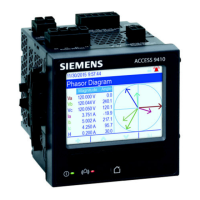
